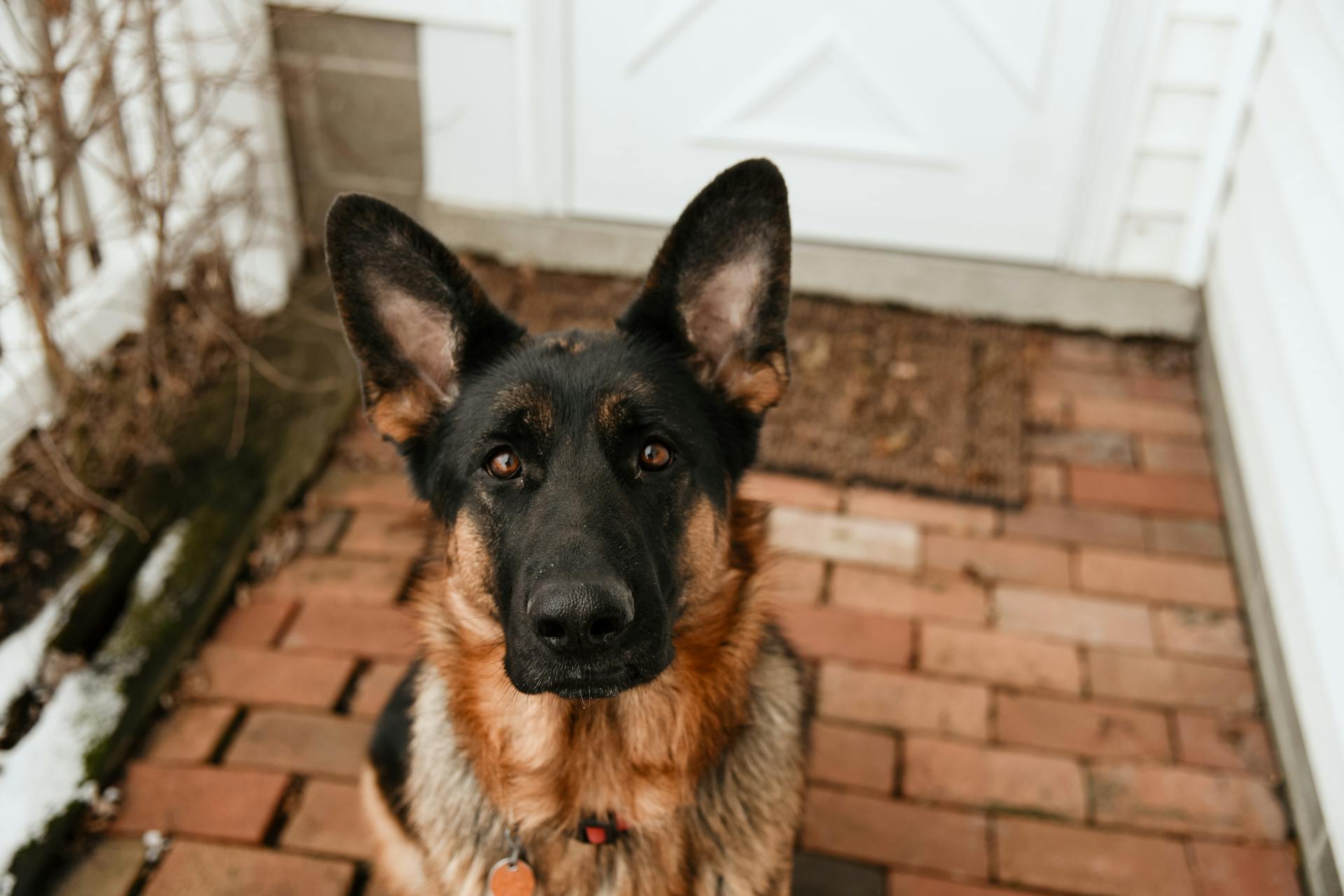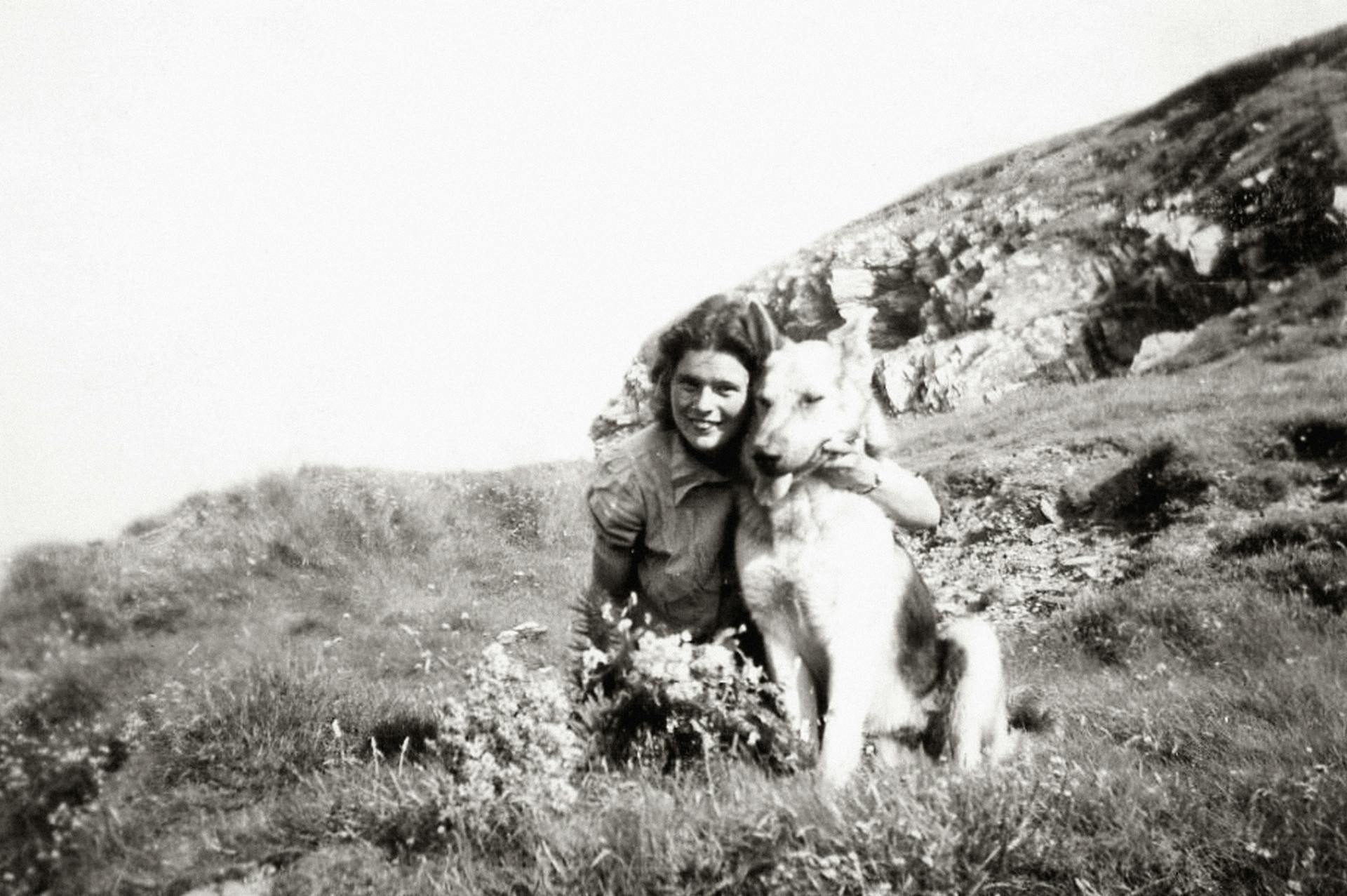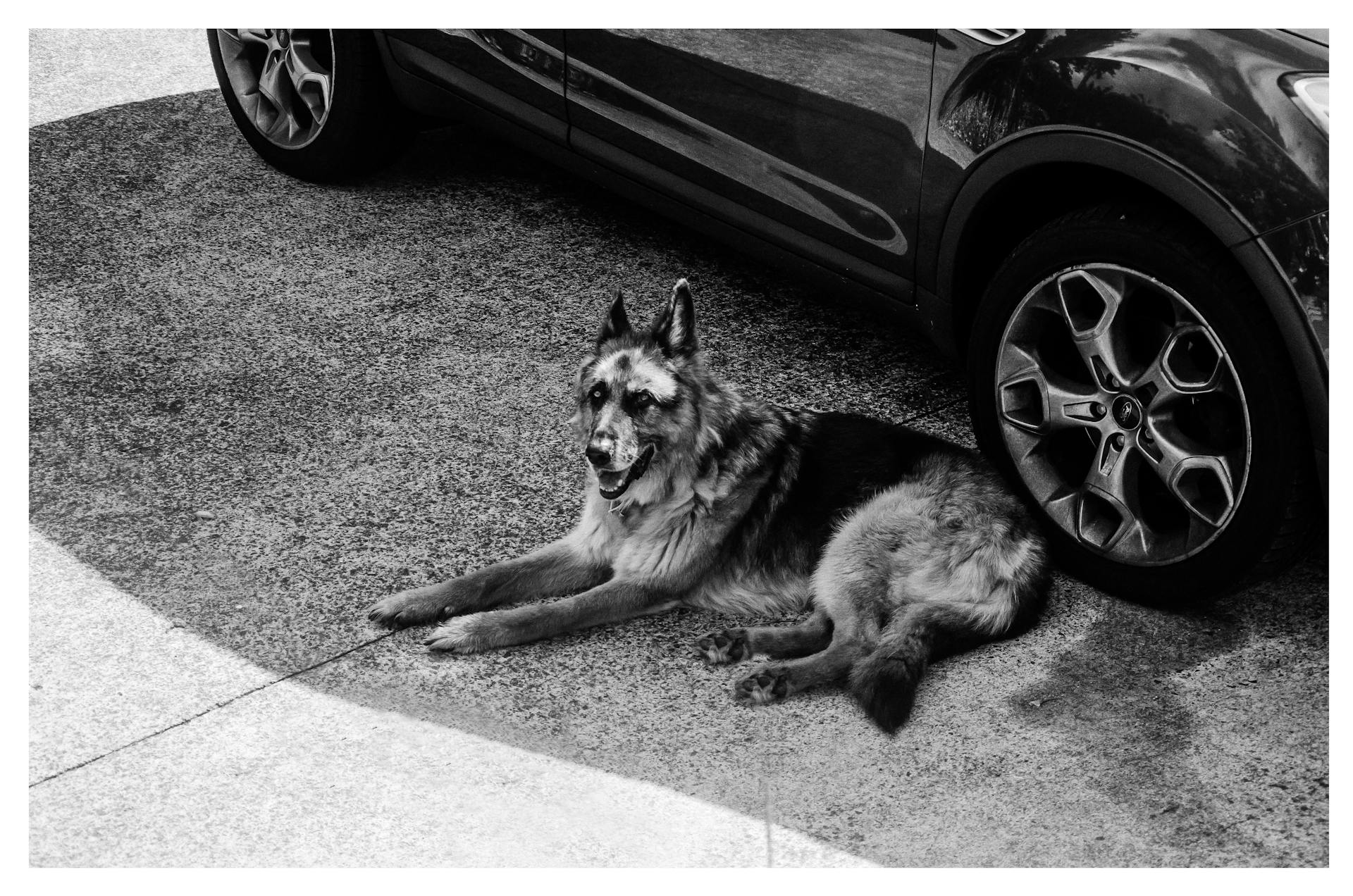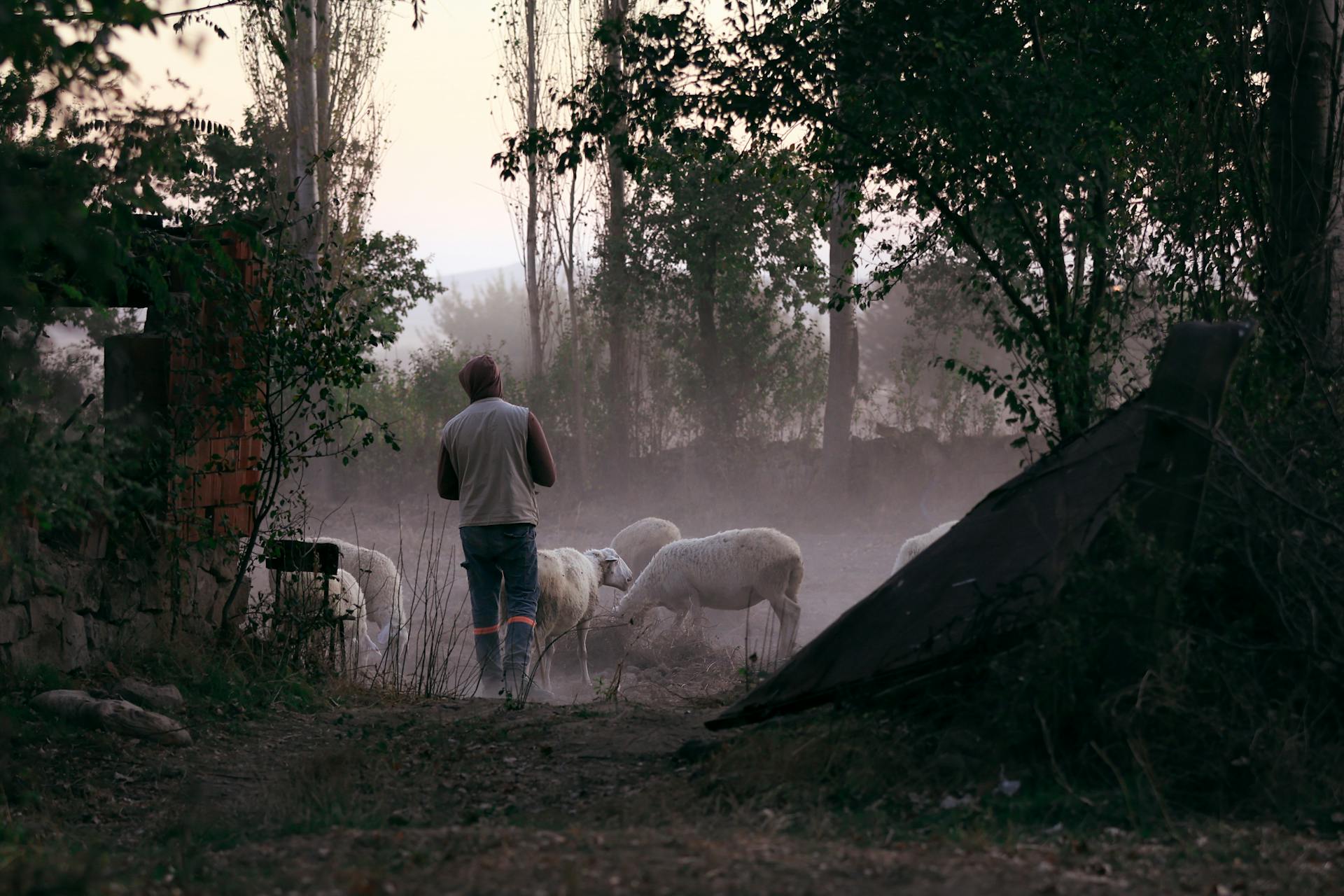
Old Style German Shepherd Dogs are bred to work, not just to look good. They were originally developed in the late 1800s by Captain Max von Stephanitz, a German cavalry officer.
Their intelligence and loyalty made them perfect for herding sheep and guarding property. They're naturally protective of their families and can be wary of strangers.
Old Style German Shepherds are highly trainable and thrive on mental and physical stimulation. They need regular exercise and a job to do, or they can get bored and restless.
Their strong work ethic and intelligence make them a popular choice for search and rescue, guiding the blind, and other specialized tasks.
History and Purpose
Max Emil Friedrich von Stephanitz, a cavalry officer in the German countryside, is credited with creating the German Shepherd breed. He was impressed by the intelligence and responsiveness of sheep-herding dogs and decided to create a formal breed of German sheepdog.
Von Stephanitz founded the world's first German Shepherd Dog club, Verein für deutsche Schäferhunde, with his friend Artur Meyer in 1899. This club aimed to promote and standardize the breed. Horand von Grafrath, a dog von Stephanitz purchased at a dog show, received the inaugural registration number SZ1 and became the first-ever German Shepherd Dog.
The breed was developed to be intelligent, loyal, alert, independent, and protective, making them suitable for families, farm work, and guard work. They were also bred as diligent working dogs for herding.
For more insights, see: Are German Shepherds Good for First Time Owners
A Passion for the Breed

Max Emil Friedrich von Stephanitz, a cavalry officer in 19th-century Germany, had a passion for sheep-herding dogs. He admired their intelligence and agility, which led him to create a formal breed of German sheepdog.
Von Stephanitz bought a large estate near the Bavarian town of Grafath to raise his German sheepdogs. He attended a dog show in April 1899, where he spotted a dog named "Hektor Linksrhein" that would change the course of history.
The 4-year-old dog's striking appearance and exceptional character impressed von Stephanitz, who described him as a "gentleman with a boundless zest for living." Von Stephanitz purchased the dog, renaming him "Horand von Grafrath", and soon founded the world's first German Shepherd Dog club.
In the early days, the club had a diverse membership of three shepherds, two factory owners, a mayor, an innkeeper, an architect, and a magistrate. Horand von Grafrath, the first-ever German Shepherd Dog, received the inaugural registration number SZ1.
Expand your knowledge: American Kennel Club Lancashire Heeler
A Service and War

The German Shepherd Dog was initially bred as a service and war dog, with von Stephanitz using Horand extensively at stud to fix valuable traits.
Von Stephanitz's hard work paid off, as some of Horand's offspring became successful, particularly his grandsons "Heinz von Starkenburg", "Beowolf", and "Pilot."
Horand's blood flows through the veins of virtually every German Shepherd Dog alive today.
The breed's value as a service dog was not immediately recognized by the German military, but von Stephanitz successfully promoted it as a peerless service dog.
He even mourned the fact that Horand had never had the opportunity to prove himself in that respect.
World War I brought anti-German sentiment, leading to the breed's name being changed in the United States and Britain.
However, the breed's reputation as a war dog spread in the aftermath of World War I, thanks in part to canine film stars like "Rin Tin Tin" and "Strongheart", who were both war veterans.
Discover more: Molossus Roman War Dog
Temperament & Intelligence
Old German Shepherd dogs are known for their playful and energetic nature, making them excellent companions for families. They're highly intelligent and thrive on training, which is essential to channel their protective instincts.
Their hard-working and reliable personality makes them an excellent watchdog, always on the alert and ready to defend their family. With proper socialization and training, their protective nature can be mitigated, but it's a wonderful trait to have in a loyal companion.
These dogs form powerful bonds with their owners, and their loyalty is unwavering. They're highly independent, which can be a challenge in urban settings, but it's a wonderful trait for a working dog to have.
Old German Shepherds are generally mellow, calm, and easy-going, making them perfect for families. They have a higher threshold for irritation and are harder to upset, but they still require supervision around young children.
Their intelligence and trainability make them suitable for various roles, from service dogs to actors in film and television. With a firm hand and clear guidance, they can learn quickly and become loyal and devoted companions.
Recommended read: What Is the Most Loyal Dog Breed
Care and Maintenance
To keep your old style German Shepherd dog healthy and happy, regular exercise is crucial. They need at least 30 minutes of exercise per day, which can be a combination of walks, runs, and playtime.
Their thick coats require regular grooming to prevent matting and tangling. Brush them at least twice a week, paying extra attention to areas where the coat is longest.
Old style German Shepherds are prone to hip dysplasia, so it's essential to keep them at a healthy weight to reduce the risk of this condition. A balanced diet and regular exercise can help achieve this goal.
Their eyes are also susceptible to problems, so keep an eye out for any signs of redness or discharge. Regular eye exams with a veterinarian can help catch any issues early on.
If this caught your attention, see: Eye Problems in German Shepherd Dogs
Exercise
Old German Shepherds are a high-energy breed that requires regular exercise to stay happy and healthy. They need at least 2 hours of exercise per day.
For your interest: Bernese Mountain Dog Exercise

As a general rule, your Old German Shepherd will need at least 2 hours of exercise per day, although more is better! This can include running, leisurely walks, hiking, or simply playing in the backyard with a ball.
Old German Shepherds tend to be more active due to their herding heritage and may need a bit more physical stimulation than modern GSDs. This means they can get bored and develop worrisome habits, including chewing, barking, and even aggression, if they don't get enough exercise.
Just be mindful with younger GSDs, though, as over-exercise while they are still growing can cause harm to their joints.
Grooming
Grooming is a crucial part of caring for your Old German Shepherd Dog. They require daily or every other day brushing to prevent their long coats from shedding all over your home.
Old German Shepherds shed plenty of hair all year round, so regular brushing is a must to keep their coat under control. This will also help prevent their hair from clumping and knotting.
Bathing is not a regular necessity unless your dog gets into sticky mud, in which case a quick spray with clean, warm water will do the trick.
Regular teeth brushing at least once a week can help prevent dental disease in your Old German Shepherd Dog.
Recommended read: Could Shiba Inu Hit $1
Health and Wellbeing
Old style German Shepherd Dogs are generally a healthy breed, but like any dog, they can be prone to certain health issues.
Their ancestors were not selectively bred for appearance, which has led to a lower incidence of inherited conditions compared to their modern counterparts.
One of the potential health issues is allergies, which can cause a range of symptoms from skin irritation to digestive problems.
Old style German Shepherd Dogs can also be susceptible to obesity, which is a common issue in many breeds.
Colitis is another possible health issue, characterized by inflammation of the colon.
Hip and elbow dysplasia are potential problems, although they occur less frequently in old style German Shepherd Dogs.
Degenerative myelopathy is a condition that affects the spinal cord, while dilated cardiomyopathy is a heart condition that can be a concern.
Bloat and gastric torsion are two other potential health issues that can be life-threatening if not addressed promptly.
Here are some potential health issues to be aware of:
- Allergies
- Obesity
- Colitis
- Hip and elbow dysplasia
- Degenerative myelopathy
- Dilated cardiomyopathy
- Bloat
- Gastric torsion
Interesting Facts
Old style German Shepherds were bred to herd sheep, making them naturally inclined to follow a leader and respond to commands.
They were originally bred in the 1800s in Germany, where they were valued for their intelligence, strength, and loyalty.
German Shepherds can weigh anywhere from 75 to 95 pounds, depending on their lineage and breeding.
In their prime, they can run up to 30 miles per hour, making them well-suited for herding sheep across vast fields.
Their distinctive coat can be black and tan or sable, with a thick undercoat that sheds heavily in the spring.
Their eyes are almond-shaped and dark, with a piercing gaze that's both alert and intelligent.
Old style German Shepherds are known for their protective instincts and can make excellent guard dogs if properly trained and socialized.
They are highly trainable and thrive on structure and clear communication, which makes them a popular choice for police and military work.
Their lifespan is typically between 9 and 13 years, with some individuals living longer with proper care and attention.
Frequently Asked Questions
What's the difference between an old German Shepherd and a German Shepherd?
Old German Shepherds have a more laid-back temperament and a longer coat compared to standard German Shepherds. They also require more exercise due to their increased energy levels
What are the three types of German Shepherds?
There are three main types of German Shepherds: West-German Working Line, East-German DDR Working Line, and Czech Working Line, each bred for specific purposes and characteristics. Understanding the differences between these lines can help you find the perfect German Shepherd for your lifestyle and needs.
What is the rarest type of German Shepherd?
The rarest type of German Shepherd is the Isabella-colored German Shepherd, also known as lilac German Shepherd, which is a result of a unique genetic combination. This rare breed is highly sought after due to its distinctive appearance and limited availability.
What did the original German Shepherd look like?
The original German Shepherd was a yellow and dark gray dog with a distinct appearance that differed from the breed we know today. Its unique characteristics set the stage for the development of the modern German Shepherd breed.
Sources
- https://www.akc.org/expert-advice/dog-breeds/german-shepherd-dog-history/
- https://www.akc.org/dog-breeds/german-shepherd-dog/
- https://www.britannica.com/animal/German-shepherd
- https://www.dogster.com/dog-breeds/old-german-shepherd
- https://www.unleashedjoy.com/post/dog-daycare-play-styles-the-german-shepherd-play-style
Featured Images: pexels.com


